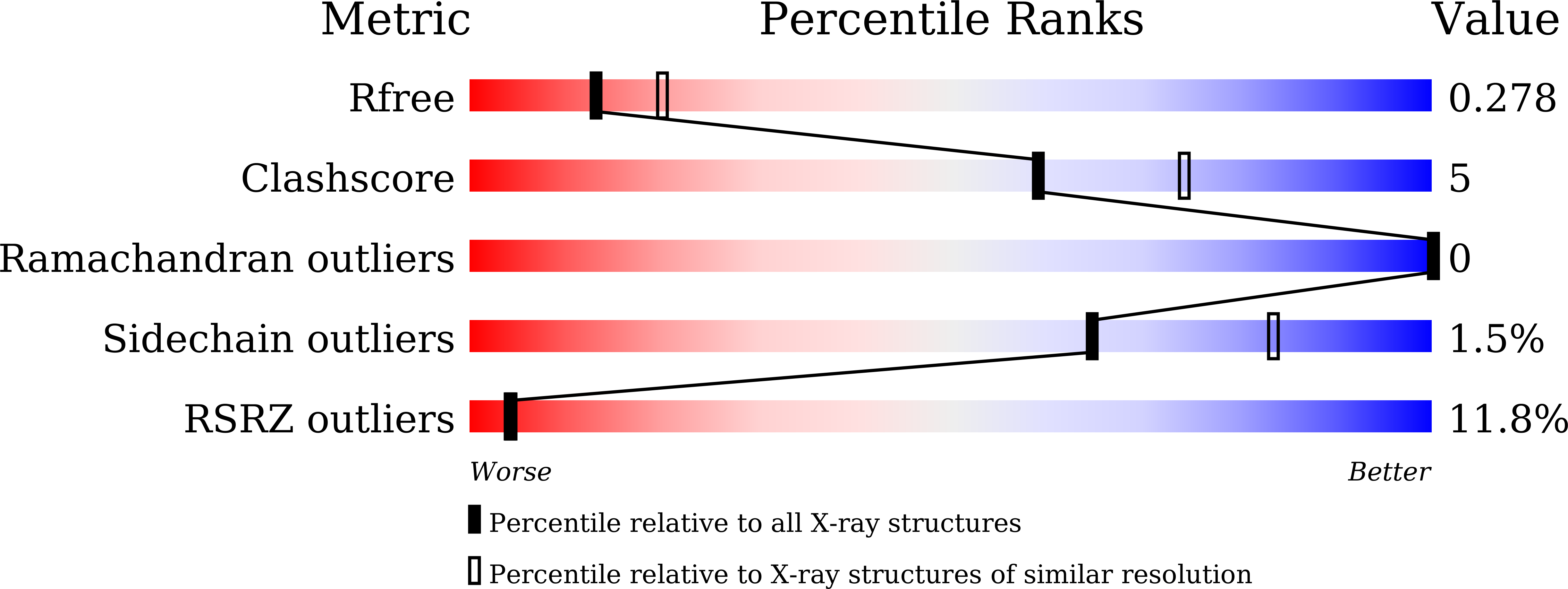Conformational dynamics of the essential sensor histidine kinase WalK.
Cai, Y., Su, M., Ahmad, A., Hu, X., Sang, J., Kong, L., Chen, X., Wang, C., Shuai, J., Han, A.(2017) Acta Crystallogr D Struct Biol 73: 793-803
- PubMed: 28994408
- DOI: https://doi.org/10.1107/S2059798317013043
- Primary Citation of Related Structures:
4U7N, 4U7O, 4ZKI, 5C93 - PubMed Abstract:
Two-component systems (TCSs) are key elements in bacterial signal transduction in response to environmental stresses. TCSs generally consist of sensor histidine kinases (SKs) and their cognate response regulators (RRs). Many SKs exhibit autokinase, phosphoryltransferase and phosphatase activities, which regulate RR activity through a phosphorylation and dephosphorylation cycle. However, how SKs perform different enzymatic activities is poorly understood. Here, several crystal structures of the minimal catalytic region of WalK, an essential SK from Lactobacillus plantarum that shares 60% sequence identity with its homologue VicK from Streptococcus mutans, are presented. WalK adopts an asymmetrical closed structure in the presence of ATP or ADP, in which one of the CA domains is positioned close to the DHp domain, thus leading both the β- and γ-phosphates of ATP/ADP to form hydrogen bonds to the ℇ- but not the δ-nitrogen of the phosphorylatable histidine in the DHp domain. In addition, the DHp domain in the ATP/ADP-bound state has a 25.7° asymmetrical helical bending coordinated with the repositioning of the CA domain; these processes are mutually exclusive and alternate in response to helicity changes that are possibly regulated by upstream signals. In the absence of ATP or ADP, however, WalK adopts a completely symmetric open structure with its DHp domain centred between two outward-reaching CA domains. In summary, these structures of WalK reveal the intrinsic dynamic properties of an SK structure as a molecular basis for multifunctionality.
Organizational Affiliation:
State Key Laboratory for Cellular Stress Biology, School of Life Sciences, Xiamen University, Xiang'an, Xiamen 361102, People's Republic of China.
















